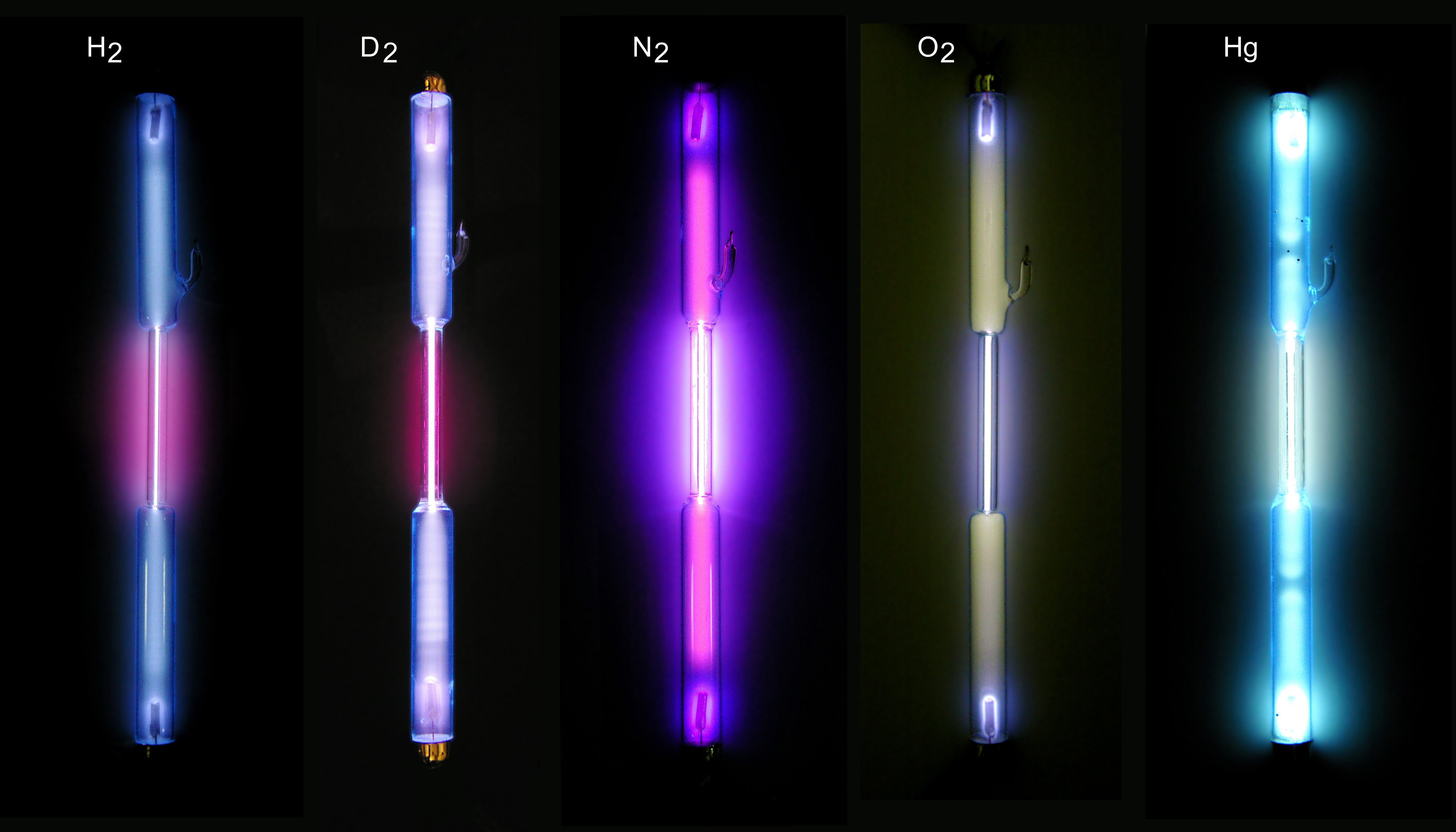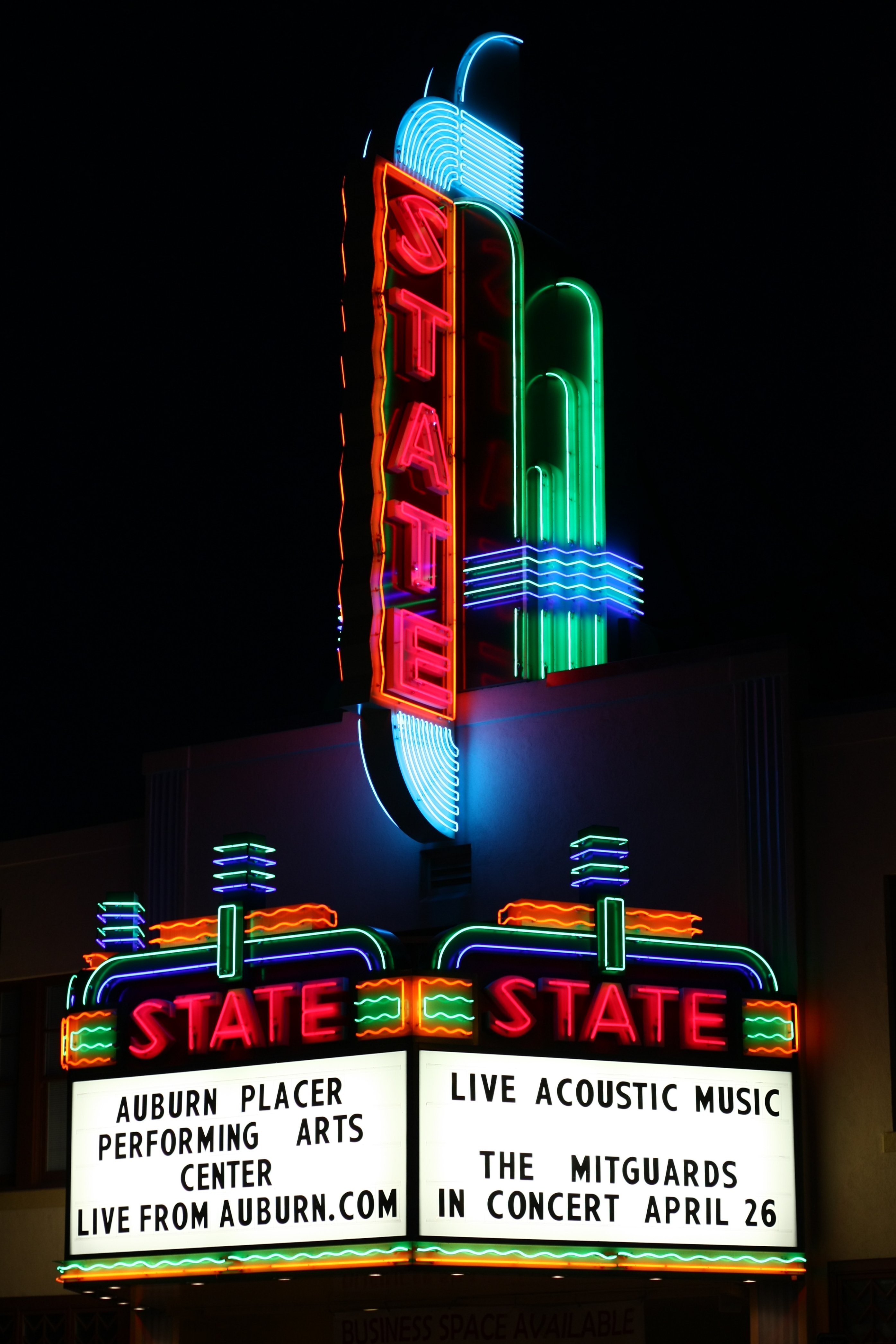|
Hollow Cathode Effect
The hollow cathode effect allows electrical conduction at a lower voltage or with more current in a cold-cathode gas-discharge lamp when the cathode is a conductive tube open at one end than a similar lamp with a flat cathode. The hollow cathode effect was recognized by Friedrich Paschen in 1916. In a hollow cathode, the electron emitting surface is in the inside of the tube. Several processes contribute to enhanced performance of a hollow cathode: *The pendulum effect, where an electron oscillates back and forth in the tube, creating secondary electrons along the way *The photoionization effect, where photons emitted in the tube cause further ionization *Stepwise ionization *Sputtering The hollow cathode effect is utilized in the electrodes for neon signs, in hollow-cathode lamp A hollow-cathode lamp (HCL) is type of cold cathode lamp used in physics and chemistry as a spectral line source (e.g. for atomic absorption spectrometers) and as a frequency tuner for light sources ... [...More Info...] [...Related Items...] OR: [Wikipedia] [Google] [Baidu] |
Cold-cathode
A cold cathode is a cathode that is not electrically heated by a filament.A negatively charged electrode emits electrons or is the positively charged terminal. For more, see field emission. A cathode may be considered "cold" if it emits more electrons than can be supplied by thermionic emission alone. It is used in gas-discharge lamps, such as neon lamps, discharge tubes, and some types of vacuum tube. The other type of cathode is a hot cathode, which is heated by electric current passing through a filament. A cold cathode does not necessarily operate at a low temperature: it is often heated to its operating temperature by other methods, such as the current passing from the cathode into the gas. Cold-cathode devices A cold-cathode vacuum tube does not rely on external heating of an electrode to provide thermionic emission of electrons. Early cold-cathode devices included the Geissler tube and Plucker tube, and early cathode-ray tubes. Study of the phenomena in these device ... [...More Info...] [...Related Items...] OR: [Wikipedia] [Google] [Baidu] |
Gas-discharge Lamp
Gas-discharge lamps are a family of artificial light sources that generate light by sending an electric discharge through an ionized gas, a plasma. Typically, such lamps use a noble gas (argon, neon, krypton, and xenon) or a mixture of these gases. Some include additional substances, like mercury, sodium, and metal halides, which are vaporized during startup to become part of the gas mixture. Single ended self-starting lamps are insulated with a mica disc and contained in a borosilicate glass gas discharge tube (arc tube) and a metal cap. They include the sodium-vapor lamp that is the gas-discharge lamp in street lighting. In operation, some of the electrons are forced to leave the atoms of the gas near the anode by the electric field applied between the two electrodes, leaving these atoms positively ionized. The free electrons thus released flow onto the anode, while the cations thus formed are accelerated by the electric field and flow towards the cathode. Typicall ... [...More Info...] [...Related Items...] OR: [Wikipedia] [Google] [Baidu] |
Friedrich Paschen
Louis Carl Heinrich Friedrich Paschen (22 January 1865 - 25 February 1947), was a German physicist, known for his work on electrical discharges. He is also known for the Paschen series, a series of hydrogen spectral lines in the infrared region that he first observed in 1908. He established the now widely used Paschen curve in his article ''"Über die zum Funkenübergang in Luft, Wasserstoff und Kohlensäure bei verschiedenen Drücken erforderliche Potentialdifferenz"''. He is known for the Paschen-Back effect, which is the Zeeman effect's becoming non-linear at high magnetic field. He helped explain the hollow cathode effect in 1916. Life Paschen was born in Schwerin, Mecklenburg-Schwerin. From 1884 to 1888 he studied at the universities of Berlin and Strassburg, after which he became an assistant at the Academy of Münster. He became a professor at the Technical Academy of Hannover in 1893 and professor of physics at the University of Tübingen in 1901. He served as presiden ... [...More Info...] [...Related Items...] OR: [Wikipedia] [Google] [Baidu] |
Pendulum
A pendulum is a weight suspended from a pivot so that it can swing freely. When a pendulum is displaced sideways from its resting, equilibrium position, it is subject to a restoring force due to gravity that will accelerate it back toward the equilibrium position. When released, the restoring force acting on the pendulum's mass causes it to oscillate about the equilibrium position, swinging back and forth. The time for one complete cycle, a left swing and a right swing, is called the period. The period depends on the length of the pendulum and also to a slight degree on the amplitude, the width of the pendulum's swing. From the first scientific investigations of the pendulum around 1602 by Galileo Galilei, the regular motion of pendulums was used for timekeeping and was the world's most accurate timekeeping technology until the 1930s. The pendulum clock invented by Christiaan Huygens in 1658 became the world's standard timekeeper, used in homes and offices for 270 years, and ac ... [...More Info...] [...Related Items...] OR: [Wikipedia] [Google] [Baidu] |
Photoionization
Photoionization is the physical process in which an ion is formed from the interaction of a photon with an atom or molecule. Cross section Not every interaction between a photon and an atom, or molecule, will result in photoionization. The probability of photoionization is related to the photoionization cross section of the species -- the probability of an ionization event conceptualized as a hypothetical cross-sectional area. This cross section depends on the energy of the photon (proportional to its wavenumber) and the species being considered i.e. it depends on the structure of the molecular species. In the case of molecules, the photoionization cross-section can be estimated by examination of Franck-Condon factors between a ground-state molecule and the target ion. This can be initialized by computing the vibrations of a molecule and associated cation (post ionization) using quantum chemical software e.g. QChem. For photon energies below the ionization threshold, the photoion ... [...More Info...] [...Related Items...] OR: [Wikipedia] [Google] [Baidu] |
Sputtering
In physics, sputtering is a phenomenon in which microscopic particles of a solid material are ejected from its surface, after the material is itself bombarded by energetic particles of a plasma or gas. It occurs naturally in outer space, and can be an unwelcome source of wear in precision components. However, the fact that it can be made to act on extremely fine layers of material is utilised in science and industry—there, it is used to perform precise etching, carry out analytical techniques, and deposit thin film layers in the manufacture of optical coatings, semiconductor devices and nanotechnology products. It is a physical vapor deposition technique. Physics When energetic ions collide with atoms of a target material, an exchange of momentum takes place between them. These ions, known as "incident ions", set off collision cascades in the target. Such cascades can take many paths; some recoil back toward the surface of the target. If a collision cascade reaches the surfac ... [...More Info...] [...Related Items...] OR: [Wikipedia] [Google] [Baidu] |
Neon Sign
In the signage industry, neon signs are electric signs lighted by long luminous gas-discharge tubes that contain rarefied neon or other gases. They are the most common use for neon lighting, which was first demonstrated in a modern form in December 1910 by Georges Claude at the Paris Motor Show. While they are used worldwide, neon signs were popular in the United States from about the 1920s to 1950s. The installations in Times Square, many originally designed by Douglas Leigh, were famed, and there were nearly 2,000 small shops producing neon signs by 1940. Pages 221–223 describe Moore tubes. Pages 369–374 describe neon tube lighting. Page 385 discusses Risler's contributions to fluorescent coatings in the 1920s. Pages 388–391 discuss the development of the commercial fluorescent at General Electric in the 1930s. In addition to signage, neon lighting is used frequently by artists and architects, and (in a modified form) in plasma display panels and televisions. Paid access ... [...More Info...] [...Related Items...] OR: [Wikipedia] [Google] [Baidu] |
Hollow-cathode Lamp
A hollow-cathode lamp (HCL) is type of cold cathode lamp used in physics and chemistry as a spectral line source (e.g. for atomic absorption spectrometers) and as a frequency tuner for light sources such as lasers. An HCL takes advantage of the hollow cathode effect, which causes conduction at a lower voltage and with more current than a cold cathode lamp that does not have a hollow cathode. An HCL usually consists of a glass tube containing a cathode, an anode, and a buffer gas (usually a noble gas). A large voltage across the anode and cathode will cause the buffer gas to ionize, creating a plasma. The buffer gas ions will then be accelerated into the cathode, sputtering off atoms from the cathode. Both the buffer gas and the sputtered cathode atoms will in turn be excited by collisions with other atoms/particles in the plasma. As these excited atoms decay to lower states, they will emit photons. These photons will then excite the atoms in the sample, which will release t ... [...More Info...] [...Related Items...] OR: [Wikipedia] [Google] [Baidu] |
Atomic Physics
Atomic physics is the field of physics that studies atoms as an isolated system of electrons and an atomic nucleus. Atomic physics typically refers to the study of atomic structure and the interaction between atoms. It is primarily concerned with the way in which electrons are arranged around the nucleus and the processes by which these arrangements change. This comprises ions, neutral atoms and, unless otherwise stated, it can be assumed that the term ''atom'' includes ions. The term ''atomic physics'' can be associated with nuclear power and nuclear weapons, due to the synonymous use of ''atomic'' and ''nuclear'' in standard English. Physicists distinguish between atomic physics—which deals with the atom as a system consisting of a nucleus and electrons—and nuclear physics, which studies nuclear reactions and special properties of atomic nuclei. As with many scientific fields, strict delineation can be highly contrived and atomic physics is often considered in the wider c ... [...More Info...] [...Related Items...] OR: [Wikipedia] [Google] [Baidu] |
Electrodes
An electrode is an electrical conductor used to make contact with a nonmetallic part of a circuit (e.g. a semiconductor, an electrolyte, a vacuum or air). Electrodes are essential parts of batteries that can consist of a variety of materials depending on the type of battery. The electrophore, invented by Johan Wilcke, was an early version of an electrode used to study static electricity. Anode and cathode in electrochemical cells Electrodes are an essential part of any battery. The first electrochemical battery made was devised by Alessandro Volta and was aptly named the Voltaic cell. This battery consisted of a stack of copper and zinc electrodes separated by brine-soaked paper disks. Due to fluctuation in the voltage provided by the voltaic cell it wasn't very practical. The first practical battery was invented in 1839 and named the Daniell cell after John Frederic Daniell. Still making use of the zinc–copper electrode combination. Since then many more batteries have be ... [...More Info...] [...Related Items...] OR: [Wikipedia] [Google] [Baidu] |





